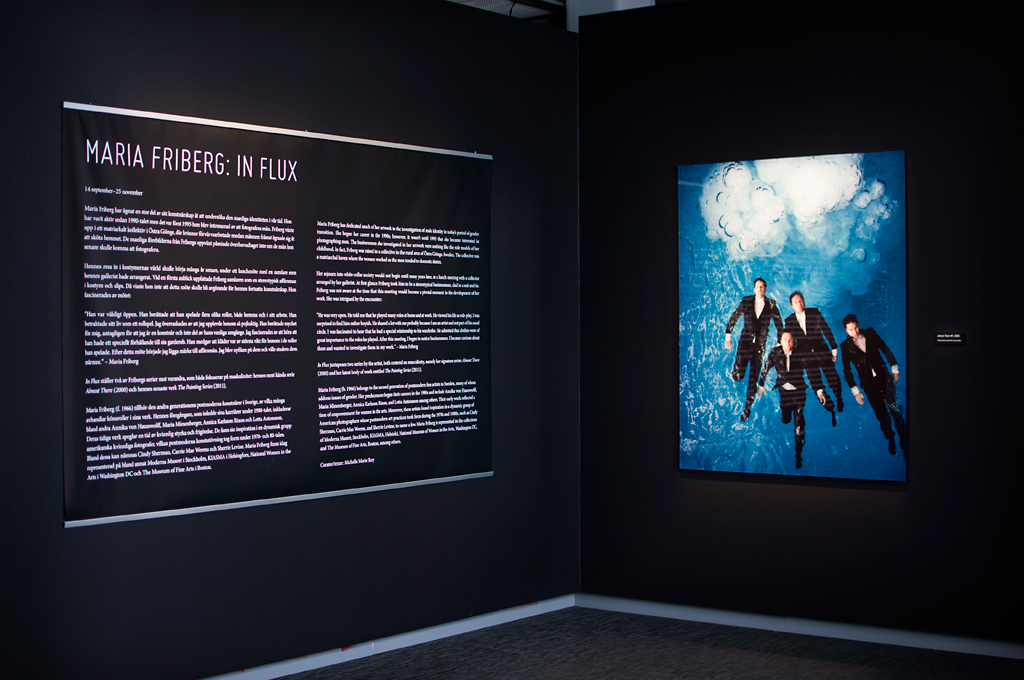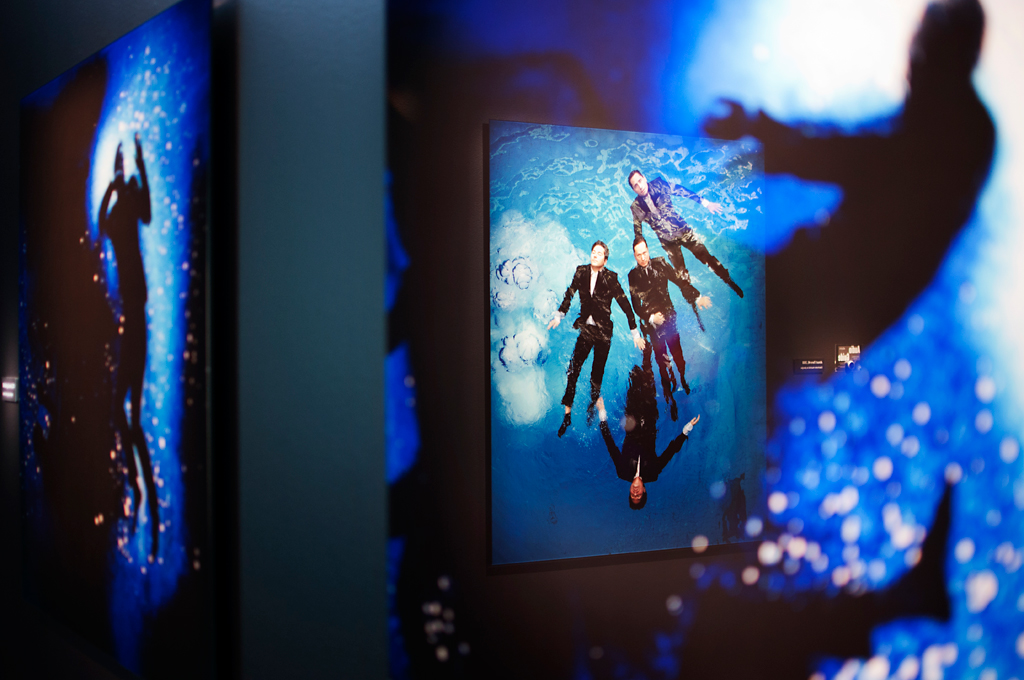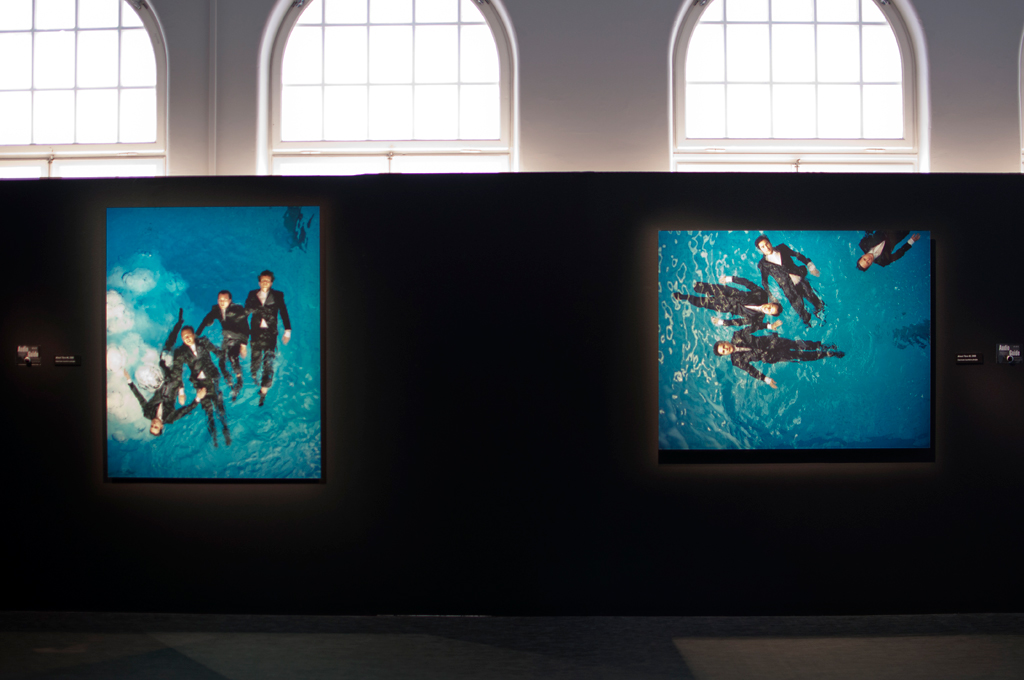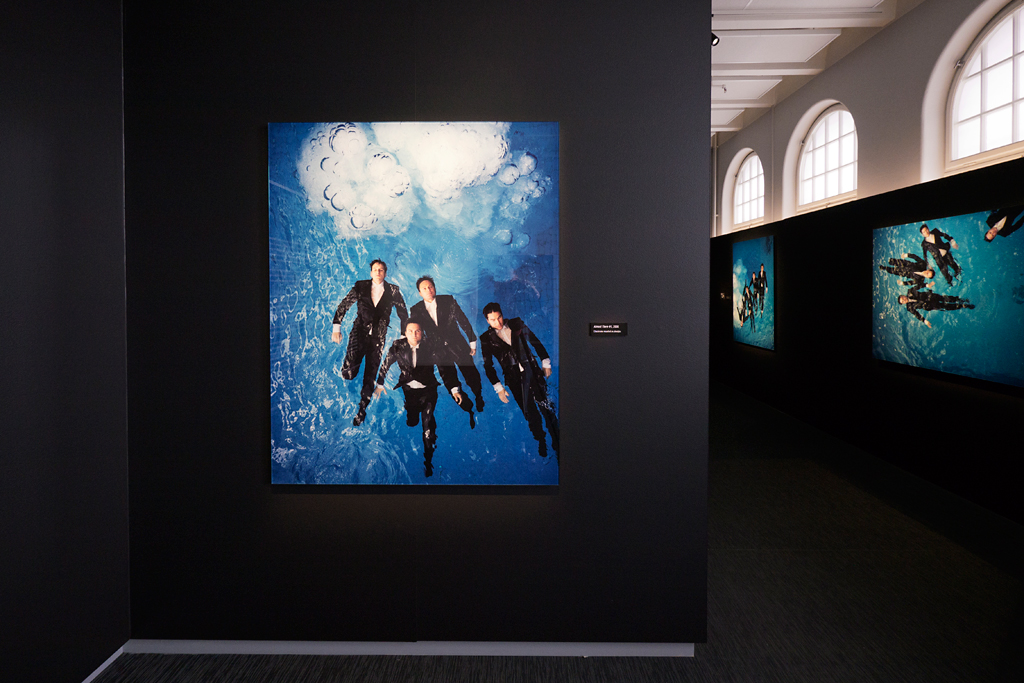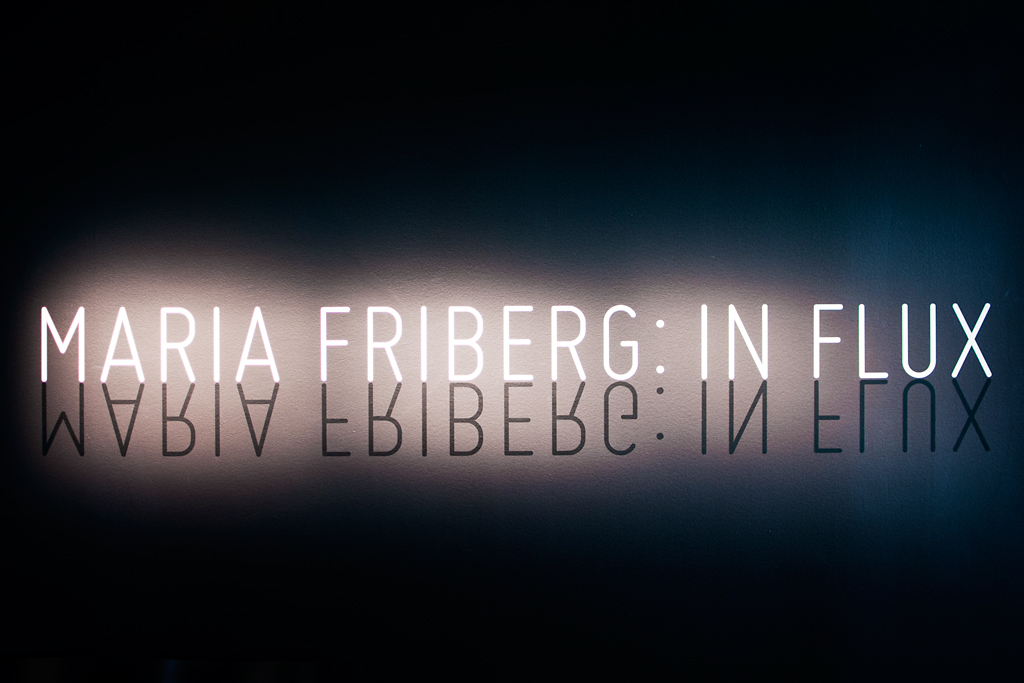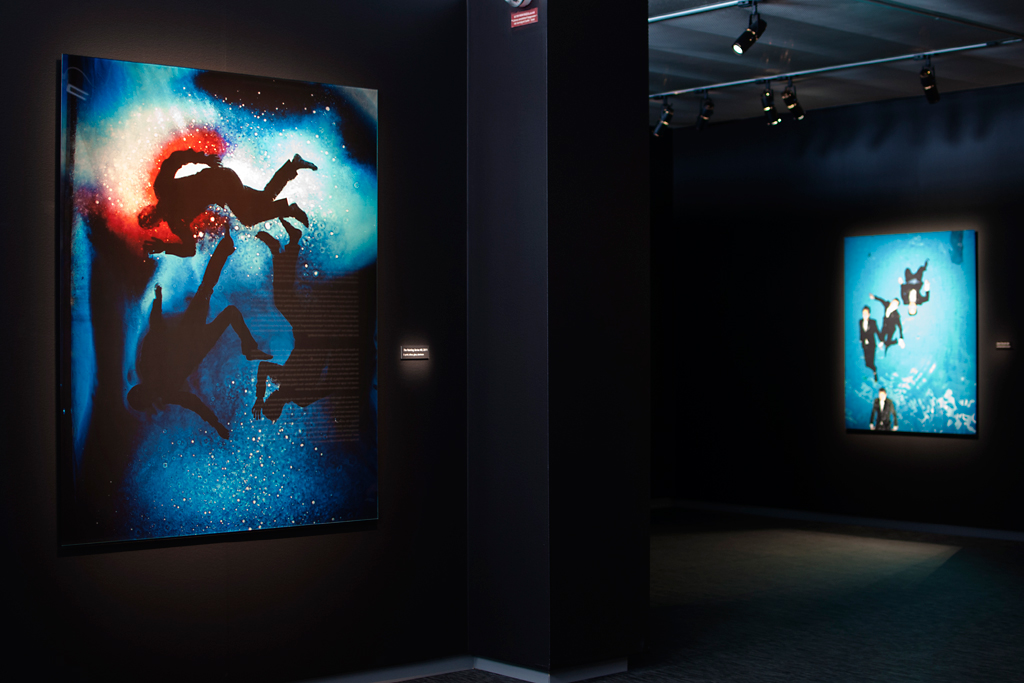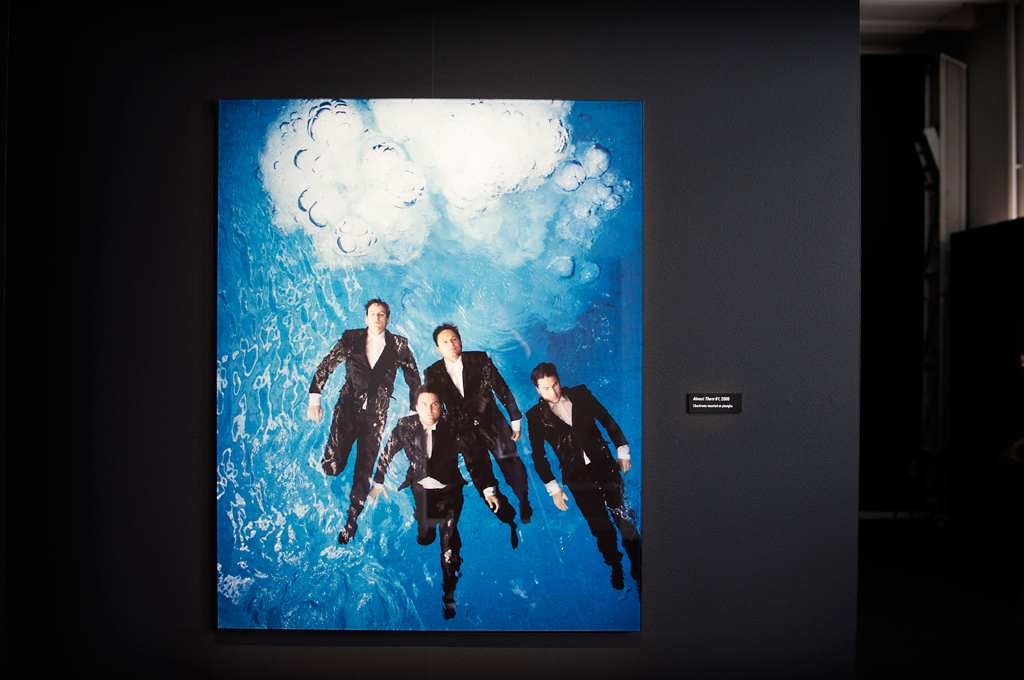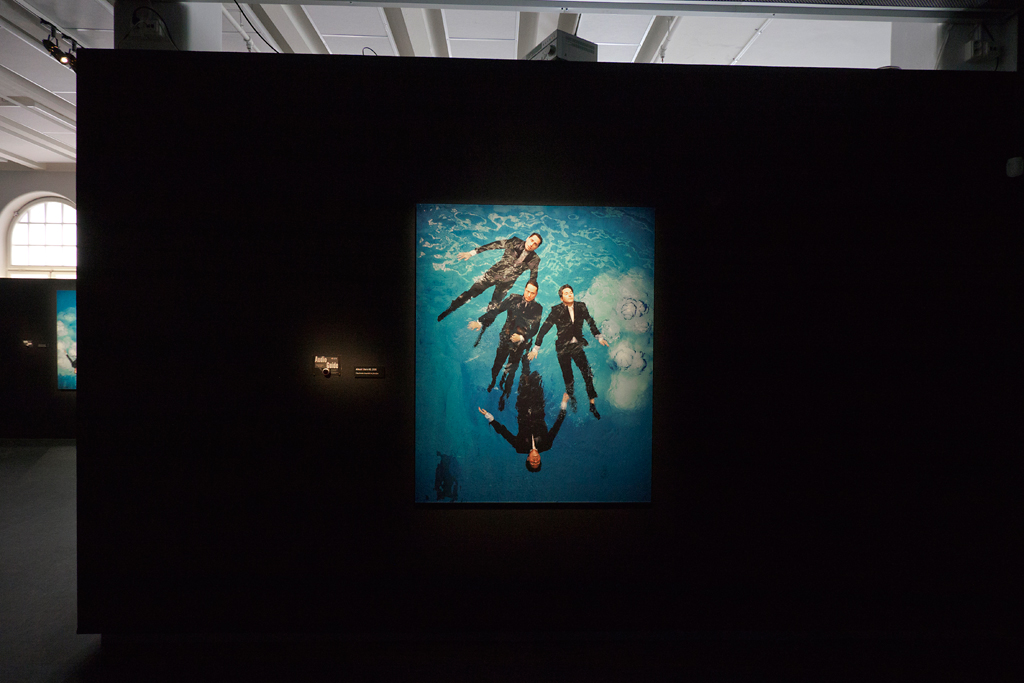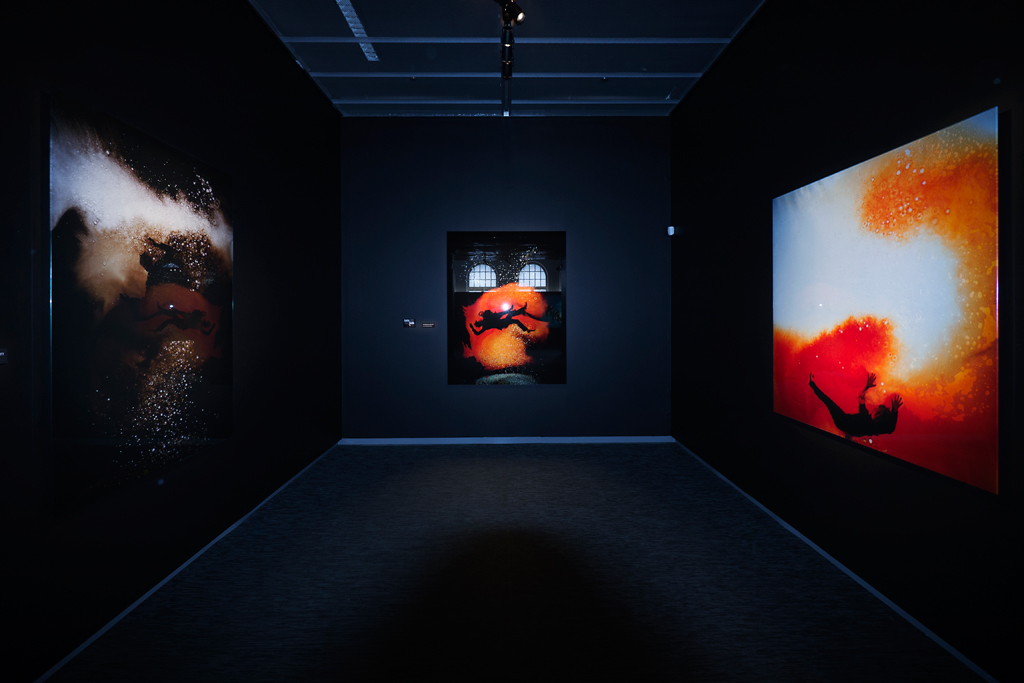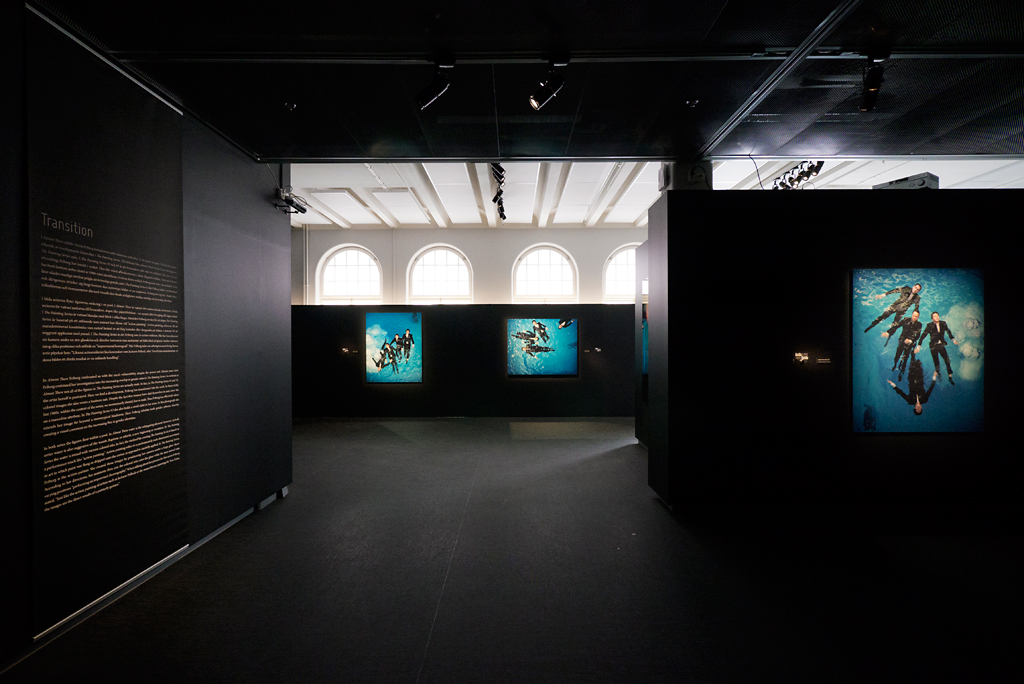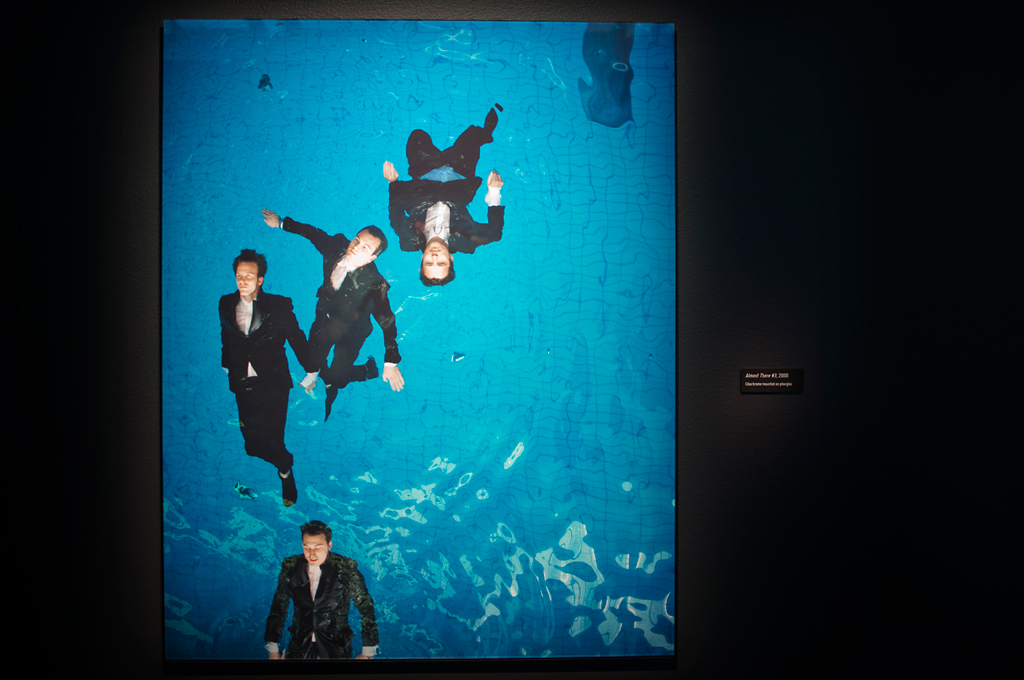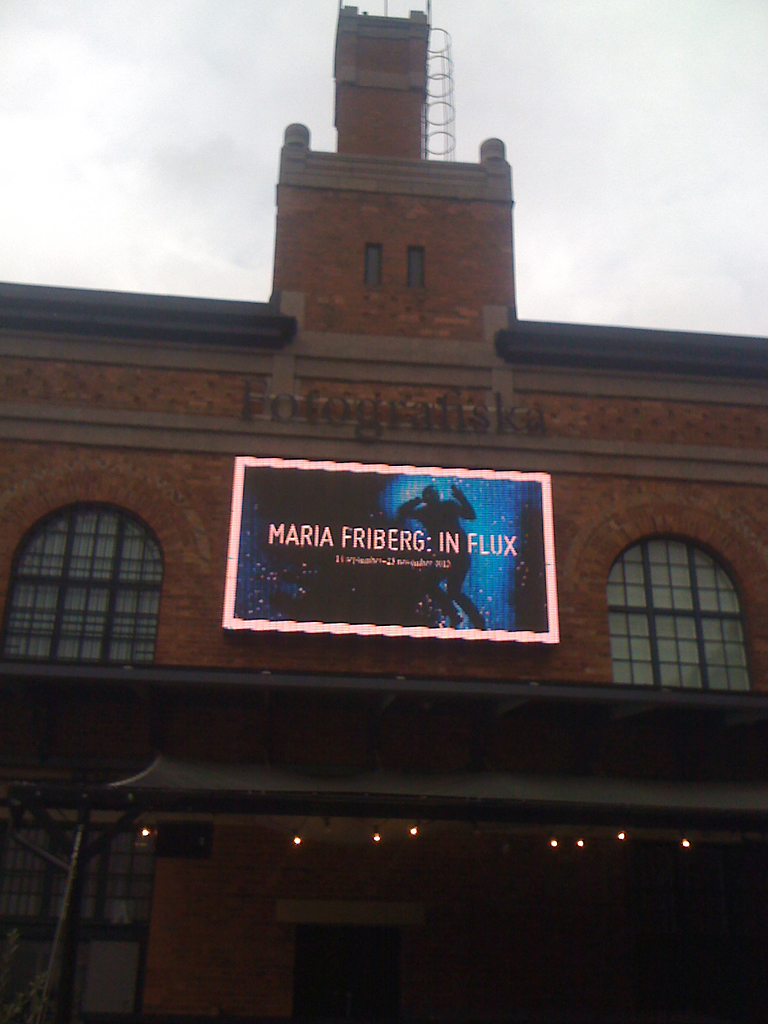In Flux – September 14 – November 25, 2012
The business suit has traditionally demarcated the male’s position in Western society as familial provider and member of the establishment. The modern business suit’s sartorial roots, as a symbol of power and masculinity, originated with the rise of Industrialism. However, since the 1970s women have been increasingly transgressing gender roles, leaving contemporary man uncertain about his masculine identity. Progressively, words such as independent and strong began to be used to positively describe women. As a consequence, the flux in gender roles brought about an upheaval in how we define masculinity. Subsequently, this crisis opened the door for men to explore the repressed aspects of their identity and move beyond societal norms.
Maria Friberg’s oeuvre is an investigation of male identity in today’s period of gender transition, as visualized in her signature series Almost There from 2000 and The Painting Series from 2011. In Almost There, we see a group of men, white men in suits, floating in a pool. Their homogeneous appearance is suggestive of the Western patriarchy. A patriarchy is formed when men are at the top of a societal structure. Clustered together, the pack of men appears to be in their mid-thirties, at the peak of their careers. They do not interact, but gaze instead into the distance. The image implies that they are rivals thereby reflecting the competitive nature of business. This is also suggested by the title, Almost There. Yet Friberg manages to disclose their vulnerability, by depicting the men straining to hold their heads above water. Accordingly, the series coincided with the burst of the dot-com bubble in 2000 – 2001. The male dominated IT industry sustained devastating losses after its stocks were grossly overvalued. In its aftermath countless men were stripped of their financial status. They found themselves in a vulnerable position, much like the men depicted in Almost There.
In both series the figures float within a pool; however, in The Painting Series the liquid is comprised of water mixed with various colored inks. In fact, the method for creating The Painting Series is based on a performance that can be likened to “action painting.” Action painting refers to a predominately male-dominated movement in art in which paint was flung or dripped on the canvas as opposed to carefully applied. In The Painting Series Friberg is the action-painter. She created these images by positioning her camera under a large glass sheet. According to her directions, her assistants then poured the colored inks onto the glass while the men “performed an improvised choreography.” When talking about her process for this series Friberg stated, “Just like the action painting of artists such as Jackson Pollock or the monochrome paintings by Yves Klein, the images are the direct results of a painterly gesture.”
As reflected in both series, male vulnerability is the focus of the majority of Friberg’s works. Moreover, in several works the subjugating element is water. This is evident in Almost There and The Painting Series but also in the video piece entitled Blown Out from 1999 where a seemingly helpless man bobs up and down in churning foamy water. In these works water is a conduit for the power of nature. Its force humbles and exposes the men’s susceptibility. Water is also suggestive of the womb, Baptism or rebirth, a new beginning or transition. This is further emphasized in Friberg’s still images where the embryonic-like liquid in which the men float creates a meditative space evoking contemplation.
However, in contrast to Almost There not all of the figures in The Painting Series are actually male. In fact, in The Painting Series #2 and #3, the artist herself is portrayed. Here we find a development. Friberg has transitioned into the work. In these richly colored images she also wears the business suit. Despite the fact that women have clad themselves in suits since the late 1960s early 1970s, within the context of the series, we momentarily identify her as male. Thus Friberg has effectively imbued her female figure with a masculine attribute. In Painting Series #2 she also holds a small child in her arms. In this photograph she extends her image far beyond a stereotypical Madonna. Visually Friberg inhabits both gender spheres, thereby creating a visual comment on the increasing flux in gender identities.
Biography
Maria Friberg (b. 1966) has been active since the mid-1990s; however, it was not until 1995 that she became interested in photographing men. She grew up in a collective in Östra Göinge, Sweden. The collective was a matriarchal haven where the women worked as the men tended to domestic duties. The male role models of her early childhood were nothing like the men she would come to photograph. Her sojourn into white-collar society would begin many years later, at a lunch meeting with a collector arranged by her gallerist. At first glance Friberg took him to be the stereotypical businessman, clad in a suit and tie. Unbeknownst to Friberg, this meeting would become a pivotal moment in the development of her work. She was intrigued by the encounter:
He was very open. He told me that he played many roles at home and at work. He thought of his life as role-play. I was surprised to find him rather boyish. He shared a lot with me probably because I am an artist and not part of his usual circle. I was fascinated to hear that he had a special relationship to his wardrobe. He admitted that clothes were of great importance to the roles he played. After this meeting, I began to notice businessmen. I became curious about them and wanted to investigate them in my work.
Maria Friberg belongs to the second generation of postmodern fine artists in Sweden, many of whom address issues of gender. Her predecessors, who began their careers in the 1980s, include Annika von Hausswolff, Maria Miesenberger, Annica Karlsson Rixon, and Lotta Antonsson among others. Their early work reflected a time of empowerment for women. Moreover, these artists found inspiration in a dynamic group of American photographers whose postmodern art practices took form during the 1970s and 1980s, such as Cindy Sherman, Carrie Mae Weems, and Sherrie Levine, to name a few.
Maria Friberg is represented in the collections of Moderna Museet, Stockholm, KIASMA, Helsinki, National Museum of Women in the Arts, Washington DC, and The Museum of Fine Arts, Boston, among others.
Curator/Texts: Michelle Marie Roy
